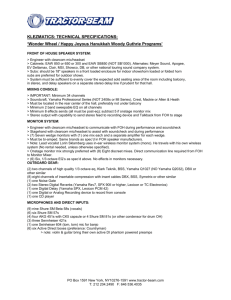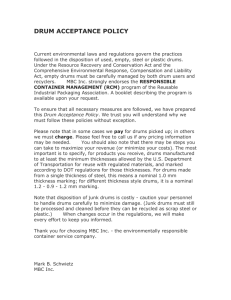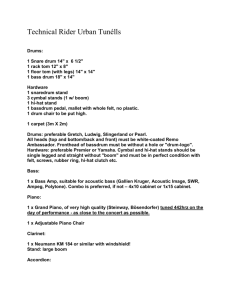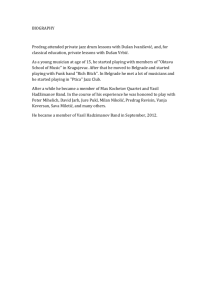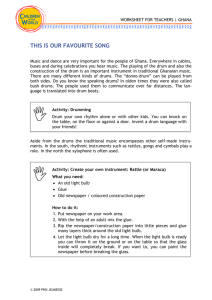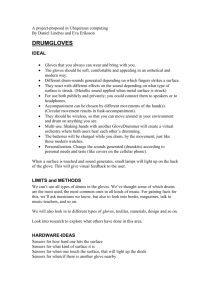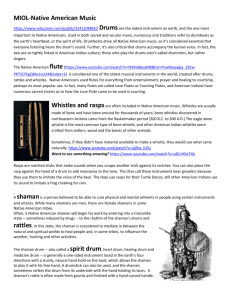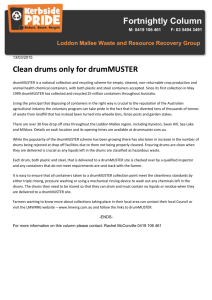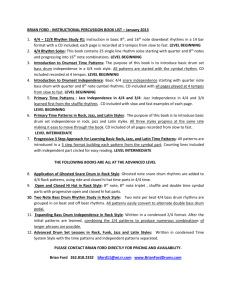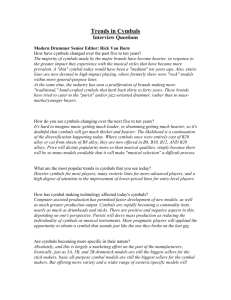A Parent's Guide to Buying a Drumset
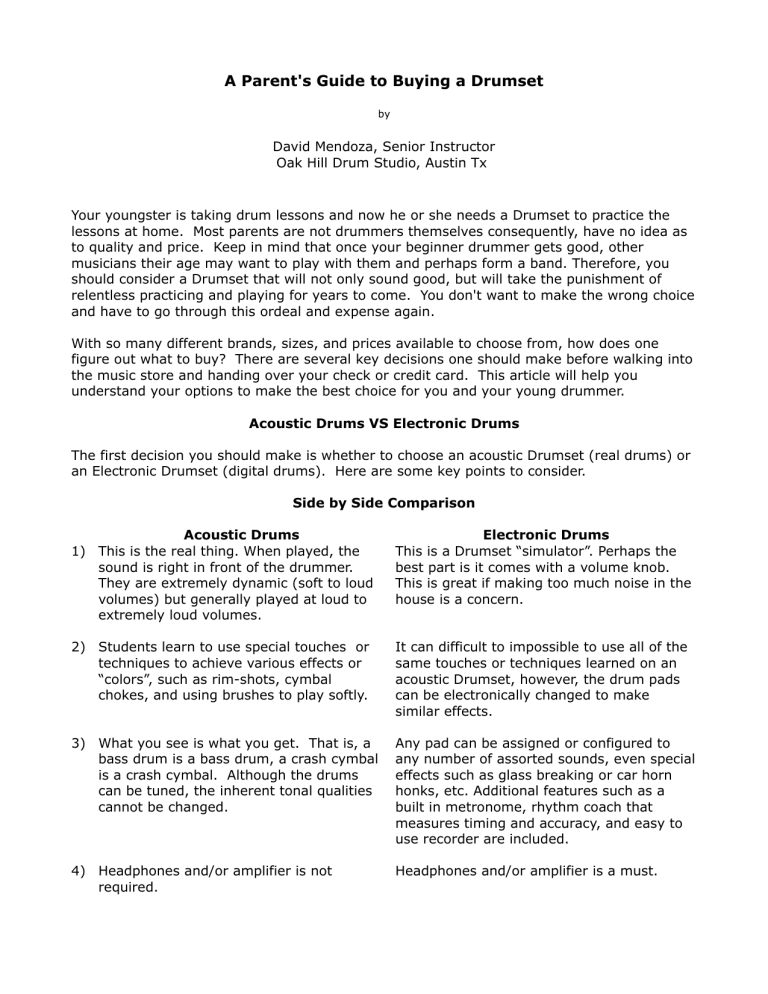
A Parent's Guide to Buying a Drumset
by
David Mendoza, Senior Instructor
Oak Hill Drum Studio, Austin Tx
Your youngster is taking drum lessons and now he or she needs a Drumset to practice the lessons at home. Most parents are not drummers themselves consequently, have no idea as to quality and price. Keep in mind that once your beginner drummer gets good, other musicians their age may want to play with them and perhaps form a band. Therefore, you should consider a Drumset that will not only sound good, but will take the punishment of relentless practicing and playing for years to come. You don't want to make the wrong choice and have to go through this ordeal and expense again.
With so many different brands, sizes, and prices available to choose from, how does one figure out what to buy? There are several key decisions one should make before walking into the music store and handing over your check or credit card. This article will help you understand your options to make the best choice for you and your young drummer.
Acoustic Drums VS Electronic Drums
The first decision you should make is whether to choose an acoustic Drumset (real drums) or an Electronic Drumset (digital drums). Here are some key points to consider.
Acoustic Drums
1) This is the real thing. When played, the sound is right in front of the drummer.
They are extremely dynamic (soft to loud volumes) but generally played at loud to extremely loud volumes.
Side by Side Comparison
Electronic Drums
This is a Drumset “simulator”. Perhaps the best part is it comes with a volume knob.
This is great if making too much noise in the house is a concern.
2) Students learn to use special touches or techniques to achieve various effects or
“colors”, such as rim-shots, cymbal chokes, and using brushes to play softly.
It can difficult to impossible to use all of the same touches or techniques learned on an acoustic Drumset, however, the drum pads can be electronically changed to make similar effects.
3) What you see is what you get. That is, a bass drum is a bass drum, a crash cymbal is a crash cymbal. Although the drums can be tuned, the inherent tonal qualities cannot be changed.
Any pad can be assigned or configured to any number of assorted sounds, even special effects such as glass breaking or car horn honks, etc. Additional features such as a built in metronome, rhythm coach that measures timing and accuracy, and easy to use recorder are included.
4) Headphones and/or amplifier is not required.
Headphones and/or amplifier is a must.
5) Periodically, drumsticks and drumheads get worn out and can even break.
Therefore, sticks and heads will need to eventually be replaced.
Sticks and drum pads never break unless intentionally damaged or abused. The pads never need tuning although better quality pads allow physical tuning for stick rebounding or bounce purposes, but not for quality of sound.
6) The drums need to be periodically tuned to sound good, much like a guitar or piano.
Cymbals cannot be tuned. The different brands, construction material, sizes, and weights make up the unique tonal quality of a cymbal including hi-hat cymbal.
Tuning for sound quality is not necessary, but can be changed with digital controls. It may be difficult to make the various digital
“teaks” or configuration changes and to understand all of different digital parameters and settings to get the most out of the drum or cymbal sound.
7) These are simple to setup, teardown, and move to another location for practicing or playing somewhere other than home.
Generally requires a truck or large car to transport. The drums can be played anywhere including outside. No electricity is required.
Somewhat tricky and can be time consuming, especially if the pads are not reconnected properly. These are smaller and lighter to transport unless a large amplification system is transported along with the drums. Electricity is a must.
8) Limited risk of part failures other than mechanical, mainly the bass drum pedal as it has moving parts.
Same as acoustic but problems such as unwanted humming or buzzing associated with loud volumes can occur. If the module won't turn on or gets dropped by accident and breaks, you can't play the gig.
9) The targets, (the drums and cymbals themselves) are large and easy to hit.
The drums take up considerable floor space.
The targets The drum and cymbal pads) are smaller, requiring better aim from the drummer. Since they are smaller in size, they take up less floor space.
10) Best suited for playing in a live band.
Although the band's volume sound or
“mix” is generally controlled by the band's sound engineer, the drummer can hear always themselves play as the sound of the drums is right in front of them.
Best suited for recording studios and quiet environments such as a church or a restaurant. For larger gigs, the drummer is at the mercy of the band's sound engineer and may not be able to hear themselves well
(due to loud guitars and/or keyboard accompaniment) unless they use noise isolation headphones when playing. This can be uncomfortable when sweating or wearing extended periods of time.
11) Cost – A new great sounding intermediate level Drumset complete with cymbals, stands, and foot pedals can run anywhere from $1000 to $2000. New Drumsets cannot be rented, although used low end drumsets can be rented for around $60 per month. There is no setup/delivery option.
Cost – A new great sounding intermediate level Electronic Drumset with headphones can run between $1000 to $2000 or more.
Add an additional $200 to $800 for amplified speakers or amplifier. New electronic
Drumsets with optional amplification system can be rented. A rent-to-own plan is available starting at $39 per month.
Setup/delivery is available.
How to Buy and Choose Electronic Drums
For electronic drums, Roland is hands down the leader in quality, technology, and sound reproduction. Therefore, I only recommend Roland. The Roland TD4 series is an awesome beginner model designed for smaller bodies and those on a budget. The TD9 series is an intermediate level model ideal for teens and adults. Both include a built-in metronome. The
TD9 series includes advanced features such as programmable backing band sounds. With the
TD9, the drummer can play along to guitar, bass, and keyboard/synthesizer sounds! Roland does not make bass drum pedals or thrones (the drum seat) so you have to buy/rent these separate to complete the drumset. Optional speaker systems are also available. Buy or rentto-own at Capital Music in Austin. Capital is locally owned and has the best selection, service, and the most knowledgeable sales staff in town. Capital specializes in Roland electronic drums, no acoustic drums or other brands of electronic drums are offered.
How to Buy and Choose Acoustic Drums
For acoustic drums, it gets tricky. When you go shopping online or at the music store you will see what appears to be complete drumsets. However, the complete drum SET is actually a collection of instruments and hardware made by different manufacturers. For instance, the drum manufacturer does not make cymbals or hardware, the cymbal manufacturer does not make drums or hardware, and by now you understand the hardware manufacturer does not make drums or cymbals. So when you go shopping, the price you see on a Drumset floor model is actually the price of the drums by themselves. The cymbals and stands and whatever else you see with the floor model is considered optional and have their own pricing.
Buying an acoustic Drumset is a three step process.
Step #1 – Choose a “Shell Pack”.
The matching set of the drums themselves is known as a shell pack. The different manufacturers all have unique finishes and/or colors to choose.
However, the most important quality of any drum is the type of wood the drum is constructed with. All woods have different tonal qualities, and to make things even more complicated, the different drum brands and models are often constructed using different kinds of wood, different number of wood plies (thin layers of wood that are bonded together), thicknesses, and bearing edge angles (the top or bottom edge of the drum that the drumhead presses and is tuned against).
There is no exact standard for how to construct a drum or what size/dimensions it should be etc., as each factor has its advantages ranging from reasons such as low cost to reasons relating to the actual sound qualities of the drum. Long story short, drums made of maple wood are known for producing a warm and rich sound. Maple is also one of the more expensive woods when it comes to drums but the good news is prices for Maple drums have come down dramatically in the last few years. Maple is my preferred choice. These days,
Maple shell packs consist of a snare drum, bass drum, and usually 3 tom-toms. This is known as a 5 piece drumset and can sell anywhere from $499 on Black Friday to $800 and up depending on the brand, number of drums, and model.
Next on my choice list of woods is Birch. Birch drums are known for projecting through other amplified instruments as well as producing good tonal qualities. The Yamaha drumset in the studio is made of Birch. Again, a 5 piece set made of Birch will run as low as $499 on a Black
Friday to $800 and more There are other good woods such as Oak and Mahogany, and even blends of two or more woods. But these are exceptions rather than the norm and are usually somewhat expensive and limited in selection.
Finally, cheaper priced or low-end shell packs are generally made of inexpensive woods that don't possess the inherent tonal qualities of the woods mentioned above. They can be tuned to sound decent, and if upgraded with more expensive drum heads can sound pretty good.
Shell packs come in two sizes, standard and fusion. Both are full sized adult drumsets and either will work well for an adult, teen, or tween. The difference is in the size of the tomtoms. Fusion is slightly smaller in diameter and slightly longer in length that standard size.
Fusion sized tom-toms have a tighter, more modern sound than standard size. On the other hand, standard sized tom-toms have a slightly deeper, bigger sound than fusion. If buying for female or smaller sized male, I suggest that fusion might physically fit them better. Yamaha,
Pearl, Tama, and DW are some of the best brands (there are other good brands as well), and any brand made of Maple or Birch will be ideal. The good news is the drum heads that are installed on the drums are included in the price of the shell pack as well as at least one dual tom tom mount (a holder that can connect up to two tom-toms on top of the bass drum) and legs for the large tom-tom to stand on the floor or a mount if the large tom-tom is designed to install on a cymbal stand. The drums in the studio are a five piece Yamaha Stage Custom
Advantage fusion-sized Birch shell pack, selling anywhere from $550 on Black Friday to $750.
A typical price for this shell pack is around $649.
Step #2 – Choose a “Cymbal Pack”.
A complete collection of cymbals is known as a cymbal pack. Again, no standard to sizes and construction but as with anything you get what you pay for. That is, the more you spend, the better they sound. Cymbals are just as important to the drummer as the drums themselves. Buying cymbals in “packs” is more cost effective that buying each cymbal individually. Cymbal packs come in a minimum configuration of a pair of hi-hat cymbals and at least one combination crash/ride cymbal. A crash/ride cymbal can be used as either a crash cymbal or a ride cymbal, and is common in low-end cymbal packs. I suggest a cymbal pack containing a pair of hi-hat cymbals (14” wide hats being the most popular size with 13” hats being common) a dedicated ride cymbal
(20” or 21” is common) and at least one dedicated crash cymbal (14”, 15”, 16”, 17”, and 18” are common sizes). The studio set has 14” Zildjian hi-hats, 14” and 16” Paiste crash cymbals, a 21 inch Sabian ride cymbal, and a little 8” Sabian cymbal called a “splash” cymbal. Cymbals on the studio drumset were not bought in a pack, they are an assortment of cymbals made by different manufacturers that I purchased individually over the course of a 40 playing career. The best brands are Zildjian, Paiste, and Sabian. I recommend buying a
Zildjian cymbal pack, as the other brands don't sound quite as good, especially at the lowend of the spectrum. All of the Zildjian packs sound good with the lowest end model being the ZBT for those on a budget, better quality ZHT (recommended for beginners), to professional level and expensive A Custom and K Custom models. Zildjian cymbal packs start at $179 for ZBT and $229 for ZHT. Cymbal stands are not included in the cymbal packs but are included in a “hardware pack”.
Step #3 – Choose a “Hardware Pack”. A hardware pack is a collection of the necessary stands and foot pedals not included in shell packs and cymbal packs. This pack usually includes a bass drum pedal, a hi-hat stand/pedal, a snare drum stand, and at least one cymbal stand. The stands work well but your drummer might want to upgrade the bass drum pedal when he or she gets good. The only thing you still need to buy is a throne (drum seat).
Hardware packs generally start around $199, and thrones around $39 and up. I suggest you sit on the throne before purchasing. You want to make sure the seat is comfortable to sit on for a long period of time. If your drummer is tiny (4, 5, or 6 yrs old) pick a throne that will
adjust to the lowest possible height for them to be able reach the pedals comfortably. Since the hardware stands don't make any noise, scrimp on the lowest priced hardware pack rather than the shell and cymbal packs.
Conclusion
If noise is a concern or if you or your young drummer like to have fun with hundreds of sounds and effects as well as tinker with technology, electronic drums are the way to go. If you decide electronic drums are the best choice for your situation, I recommend Roland
Drums. They are the leader in both quality and technology and sound fabulous!
On the other hand, acoustic drums are the real thing and you don't have to be a sharpshooter to hit the smaller targets. You don't need an amplifier to hear them and you don't need a technical background to tune, setup, and play. However, you can't change the inherent tonal qualities of either the drums or cymbals. You get what you pay for and what you buy is what you get. If your budget is restricted to something around $600 or less, I suggest buying a quality used kit, although this option may open up it's own can of worms.
Keep in mind that people are usually selling their used Drumset because it doesn't sound good and want to replace it. The cymbals included are often junk, and you may need to replace old or worn drum heads that have lost their tonal qualities.
Please don't buy a beginner or junior Drumset at a megastore. They sell toys, not real musical instruments, and your young drummer won't like the sound. Instead consider the least expensive model at a music store. You can find a new complete Drumset with a modest cymbal upgrade for $500-$600, and this will get your young drummer practicing. Additional upgrades can be added later. Music stores often buy used gear from a customer to make a sale, so ask if they have a used shell pack or used cymbals to consider.
Remember, if the Drumset at home is cheap or incomplete, your young drummer will resist practicing because it won't sound good. It's best to spend a little more up front than you originally planned, especially if your young drummer is doing well at the lessons. When a musician chooses an instrument, they normally try out and listen to several before settling on the one they like the best and can afford. Have your drummer try out several floor models at the store. Some sound better than others. Same with the cymbals.
Sometimes parents don't have any preferences or noise concerns. I'm often asked...what is best choice for my student to learn on, acoustic or electronic? While electronic drums are fun, it's best for a serious drummer to learn and play the real thing (I own both).
Copyright 2011
Oak Hill Drum Studio

